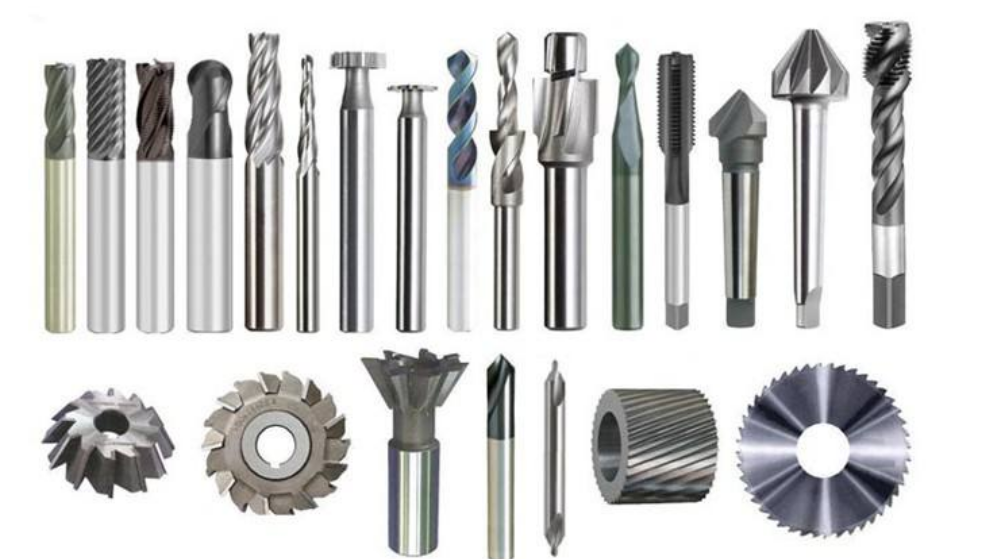1. Types, properties and characteristics of diamond tool materials and tool applications
Diamond is an allotrope of carbon, the hardest material that has been found in nature. Diamond tools have high hardness, high wear resistance and high thermal conductivity, and are widely used in the processing of non-ferrous and non-metallic materials. Especially in the high-speed cutting of aluminum and silicon-aluminum alloys, diamond tools are the main types of cutting tools that are difficult to replace. Diamond tools that can achieve high efficiency, high stability and long life are an indispensable tool in modern CNC machining.
⑴ types of diamond tools
①Natural diamond tool: Natural diamond has been used as a cutting tool for hundreds of years. After fine grinding, the natural single crystal diamond tool can be sharpened extremely sharply. It produces extremely high workpiece accuracy and extremely low surface roughness, and is a recognized, ideal and irreplaceable ultra-precision machining tool.
②PCD diamond tool: Natural diamond is expensive, and polycrystalline diamond (PCD) is still widely used in cutting. , In many cases, natural diamond tools have been replaced by artificial polycrystalline diamond. PCD raw materials are rich in sources, and its price is only one tenth to one tenth of natural diamond.
PCD tools cannot grind extremely sharp edges, and the surface quality of the processed workpieces is not as good as that of natural diamonds. At present, PCD inserts with chipbreakers cannot be easily manufactured in the industry. Therefore, PCD can only be used for fine cutting of non-ferrous metals and non-metals, and it is difficult to achieve ultra-precision mirror cutting.
③ CVD diamond tools: Since the late 1970s and early 1980s, CVD diamond technology has appeared in Japan. CVD diamond refers to the use of chemical vapor deposition (CVD) to synthesize a diamond film on a heterogeneous substrate (such as cemented carbide, ceramics, etc.). CVD diamond has exactly the same structure and characteristics as natural diamond.
The performance of CVD diamond is very close to that of natural diamond. It has the advantages of natural single crystal diamond and polycrystalline diamond (PCD), and overcomes their shortcomings to a certain extent.
(2) Performance characteristics of diamond tools:
①High hardness and wear resistance: Natural diamond is the hardest substance found in nature. Diamond has extremely high wear resistance. When machining high-hardness materials, the life of diamond tools is 10 to 100 times that of cemented carbide tools, or even hundreds of times.
②It has a very low friction coefficient: the friction coefficient between diamond and some non-ferrous metals is lower than other tools, the friction coefficient is low, the deformation during processing is small, and the cutting force can be reduced.
③The cutting edge is very sharp: the cutting edge of the diamond tool can be very sharp, and the natural single crystal diamond tool can be as high as 0.002 ~ 0.008μm, which can perform ultra-thin cutting and ultra-precision machining.
④ It has high thermal conductivity: the thermal conductivity and thermal diffusivity of diamond are high, the cutting heat is easily dissipated, and the temperature of the cutting part of the tool is low.
⑤ Has a lower thermal expansion coefficient: The thermal expansion coefficient of diamond is several times smaller than that of cemented carbide, and the change in tool size caused by cutting heat is small, which is particularly important for precision and ultra-precision machining that require high dimensional accuracy.
(3) Application of diamond tools.
Diamond tools are mostly used for fine cutting and boring of non-ferrous and non-metallic materials at high speed. It is suitable for processing various wear-resistant non-metals, such as glass fiber reinforced plastic powder metallurgy blanks, ceramic materials, etc.; various wear-resistant non-ferrous metals, such as various silicon aluminum alloys; various non-ferrous metals finishing.
The disadvantage of diamond tools is poor thermal stability. When the cutting temperature exceeds 700 ° C ~ 800 ° C, it will completely lose its hardness; in addition, it is not suitable for cutting ferrous metals, because diamond (carbon) is easy to mix with iron at high temperatures. The atomic action converts the carbon atoms into a graphite structure, and the tool is easily damaged.

